Chair Caning Tip of the Day
One time during a chair caning class at North House Folk School in Grand Marais, Minnesota, the class got off to a slow start.
We had to fix a broken hole cane chair frame and a rocker frame in a repair session before we could actually begin the class weaving process.
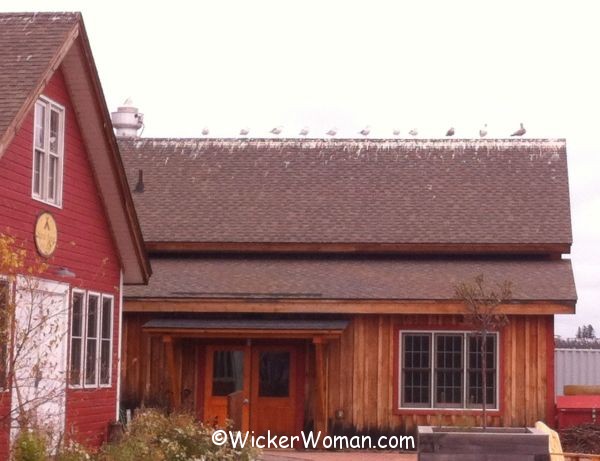
Have you ever had this happen to you, finding the hole cane chair frame is broken all through the drilled holes?
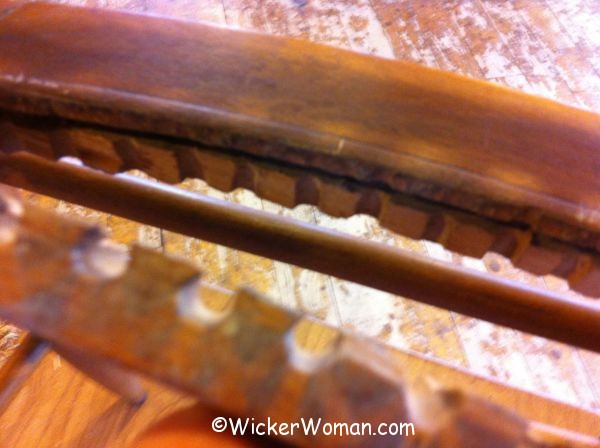
Luckily, the repairs of gluing and clamping didn’t take too long and then we were good to go…You can follow these tips and fix your broken hole cane frames, too.
broken Hole Cane seat frames Need Repairs
Both of the students’ chair frames had split and broken rails. The back rail of the chair seat frame was broken all the way from corner to corner.
And the Lincoln rocker front seat rail was cracked and split from the left corner to the middle of the rail.
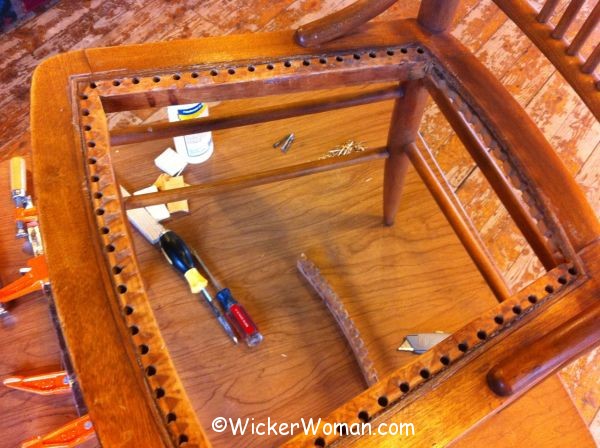
Repairing the broken Hole Cane rocker frame
On the Lincoln rocker, we opened the split on the front rail as much as possible, applied wood glue, and used clamps to hold the rail together to dry for a while.
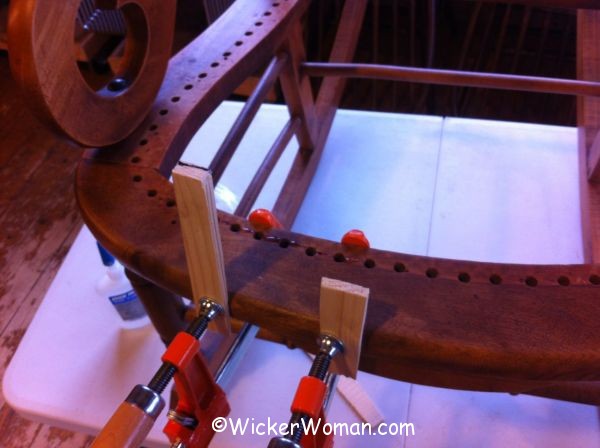
Then we applied three screws between the holes, attached from the back or inside of the rail and counter sunk the screw heads. This way the repairs were not visible.

Repairing the broken Hole Cane Chair frame
The little chair was a different story since someone had converted a previously pressed cane or cane webbing seat to a hole-to-hole cane seat somewhere along the line.
They didn’t drill the holes evenly spaced, and they were too close to the inner edge of the spline groove.
So the rail split in the back when the new strand cane dried and pulled tightly on those holes.
It’s also possible that the previous weaver had the tension of the cane seat put in too tightly, which also breaks the frame.
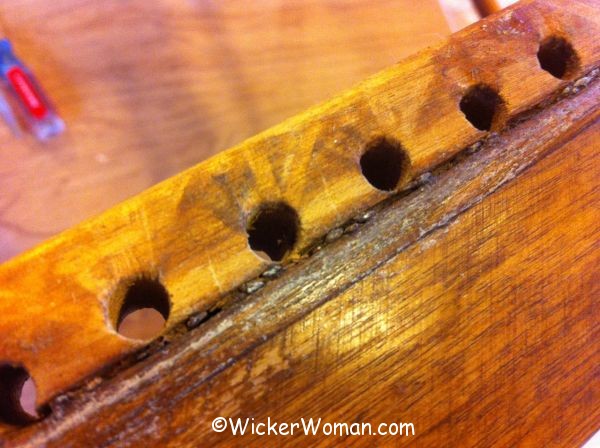
Frequently, when you try to convert the cane style from spline cane to hole-to-hole or vice versa, it weakens the chair seat and just might cause damage like this.
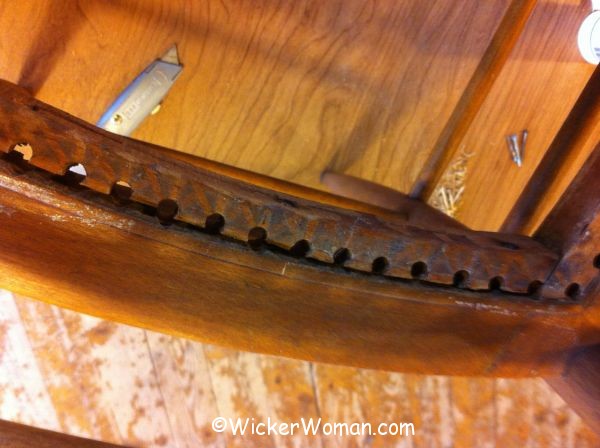
On the chair frame, we pried off the broken part of the chair frame and removed all the remaining cane that was left in the holes.
We also cleaned the glue from both sides of the break as best we could because new glue won’t stick to old glue.
Next, we applied wood glue and clamped the rail together until the glue set.
You can use trim screws, cabinet screws or drywall screws, just so they are long enough to go through the break but not too deep into the frame.
Pre-drilled the holes horizontally for the three screws put between the frame holes from the inside back rail.
Be sure to countersink the screw holes so the screws are flush with the rail and are not too visible.
This way, you could only see the repaired area and the screws if you turned the chair upside down and actually looked closely.
Sorry, I forgot to take pictures of the gluing-up process after we fixed the broken hole cane seat frame.
Thanks to Russ and Dennis for all their help and advice on this project!
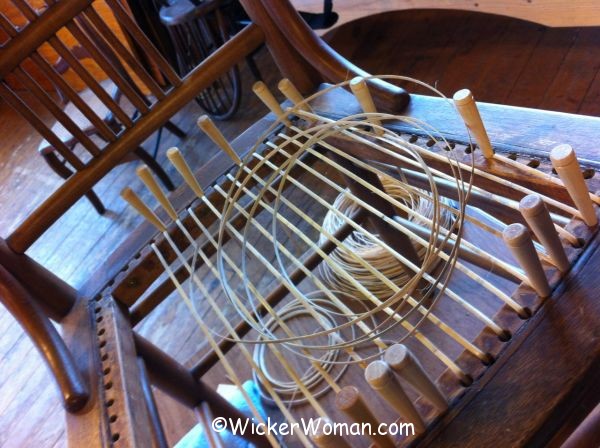
Use Cane Chair frames as intended
Keep the following chair caning tips in mind:
- So the rule of thumb is to leave well enough alone; only replace with like materials
- Replace hole cane seats with strand cane and replace cane webbing seats with loom-woven cane webbing material
- Don’t try to convert from spline or cane webbing to hole cane seats
- And if you have a traditional hole-caned seat, don’t convert to cane webbing or spline cane
- Whatever was originally used when the manufacturer created the chair should be used consistently throughout the chair’s life
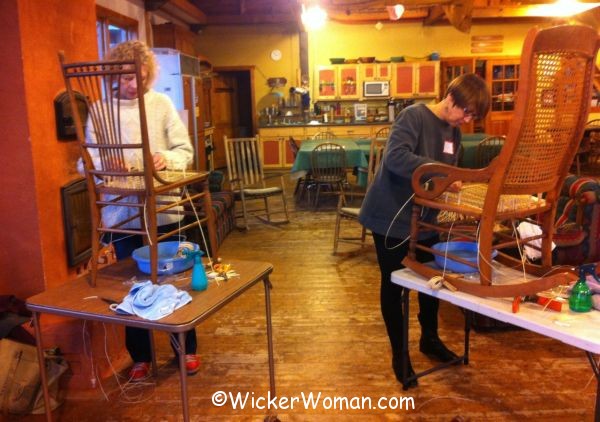
Please keep in mind that whenever you take one of your chairs to a chair caning class, make sure all the frames are in excellent shape. Any refinishing, painting, varnishing, or staining should be done before class time, too.
Otherwise, you will be slowing down the entire class in order to get the frames in proper form to weave the seats.

What are your thoughts about this blog post?
Leave your comments below and share with your social networks!
~~Live Well, Laugh Often, Love Much ~~
Happy Weaving, until next time!





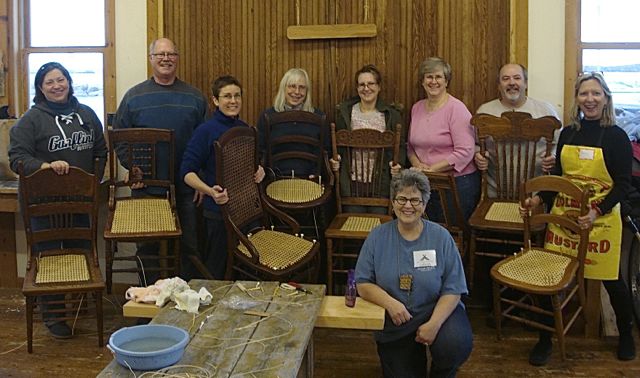
Hi, Are you located in Missouri? We may have a friend in common: Cheryl Schmidt. If so, I hope to learn from you. Thanks
No, William, I am not located in Missouri, I’m in Hudson, Wisconsin. But the name sounds familiar.
If you are looking for chair caners in Missouri, check on my Furniture Repair Directory™ to see if our common person is there.
Is there anything in particular that you are hoping to learn about?
Cathryn